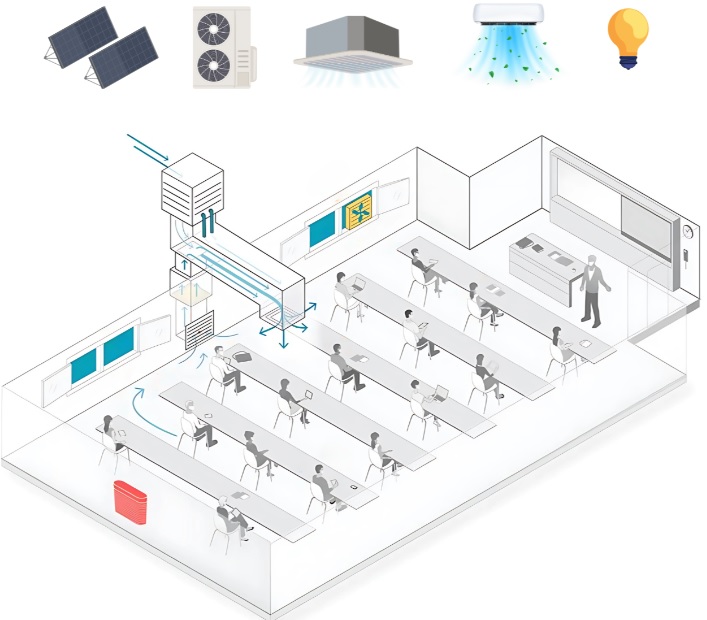With the new European Directive EPBD IV, the future of construction is not only green—it’s smart, connected, and efficient. Starting May 28, 2024, a new era officially begins for European buildings: climate neutrality by 2050, zero-emission constructions from 2030, and... a key protagonist: BACS systems.
Mandatory for the non-residential sector and soon also for residential buildings, BACS systems turn buildings from mere energy users into active and responsive hubs, capable of interacting with the grid and optimizing their energy consumption in real time.
What are BACS? The technology that makes the difference
Building Automation and Control Systems (BACS) are the beating heart of smart buildings. They monitor, manage, and control HVAC systems, lighting, solar shading, security, and domestic hot water—ensuring environmental comfort and energy efficiency.
Thanks to their integration with advanced systems such as Building Management Systems (BMS) and their ability to adapt to multi-building scenarios, BACS enable dynamic and personalized space management. And by interacting with the Smart Grid, they become an active part of the electrical network.
EPBD IV: obligations, opportunities, and market value
Directive 2024/1275 leaves no room for interpretation: BACS are becoming mandatory in more and more buildings. Here's what's changing:
-
Residential: Starting in 2026, new homes and renovated buildings must be equipped with advanced BACS systems
-
Non-residential: The threshold drops from 290 kW to 70 kW, involving a significantly larger portion of the building stock
-
Advanced functions: Continuous energy monitoring, detection of inefficiencies, full interoperability, and indoor environmental quality tracking
-
Smart Readiness Indicator (SRI) scores increase with BACS adoption, making buildings more competitive and attractive in the market
Italy’s landscape: moving toward intelligent construction
Italy is aligning with Europe: Legislative Decree 48/2020 already transposes EPBD III, while the UNI EN ISO 52120-1 standard classifies BACS systems into four levels—from Class D (inefficient) to Class A (high energy performance).
Regions such as Emilia-Romagna have already anticipated regulations by extending obligations to new residential buildings. The Green Public Procurement (CAM Edilizia) rewards projects that adopt Class A BACS solutions, fully in sync with European goals.
Tangible benefits: efficiency, savings, sustainability
Investing in BACS means more than just complying with regulations—it means choosing a smarter future for your building:
-
Up to 55% energy savings
-
Healthy and comfortable indoor environments
-
Remote and centralized control
-
Predictive maintenance
-
Increased real estate value
-
ESG compliance and greater market appeal
According to EU studies, BACS adoption can reduce total energy consumption by 14% by 2038.

BACS: the cornerstone of sustainable construction
EPBD IV offers more than regulatory mandates—it’s a launchpad for constructing buildings ready to meet future environmental, energy, and economic challenges.
With BACS, every building can become a model of sustainability, efficiency, and technological innovation.
How SmartDHOME supports companies embracing the energy transition
SmartDHOME is strategically positioned to lead the BACS market, backed by years of experience and a technological portfolio fully aligned with new regulatory and sustainability demands.
Here’s how it can make a concrete contribution:
Technological innovation serving efficiency
SmartDHOME develops cutting-edge solutions for energy monitoring, building automation, and intelligent facility management, integrating:
-
IoT devices for remote control and real-time data collection
-
Cloud platforms for consumption analysis and predictive management
-
Home Energy Management Systems for residences, businesses, and public authorities
These technologies fully comply with EPBD IV’s requirements for advanced and interoperable BACS systems.



